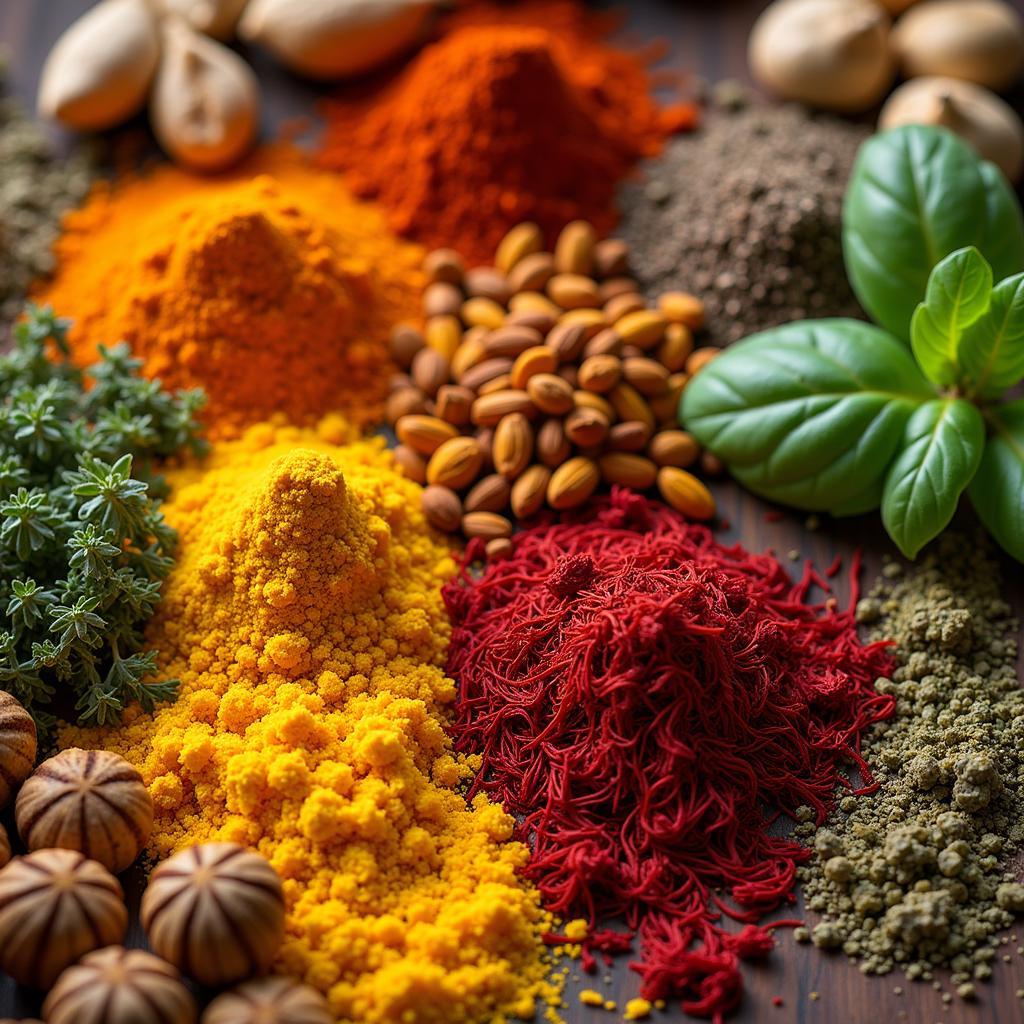The world of food is a tapestry of diverse flavors and aromas, and few cuisines are as celebrated as Middle Eastern and Mediterranean. While these culinary traditions share some common ground, they also boast unique characteristics that set them apart. This article delves into the heart of Middle Eastern Food Vs Mediterranean, exploring their similarities, differences, and the cultural influences that have shaped them.
Shared Roots, Distinct Identities
Both Middle Eastern and Mediterranean cuisines have roots in ancient civilizations and trade routes. The Fertile Crescent, an area spanning parts of the modern Middle East, is considered the birthplace of agriculture, where many staple ingredients like wheat, lentils, and chickpeas were first cultivated. This shared heritage explains the prevalence of these ingredients in both cuisines.
The Mediterranean diet, on the other hand, is heavily influenced by the countries bordering the Mediterranean Sea, including Italy, Greece, and Spain. Its emphasis on olive oil, fresh vegetables, seafood, and herbs is a defining characteristic.
A Culinary Journey: Exploring the Differences
While overlaps exist, several key factors distinguish Middle Eastern food from its Mediterranean counterpart.
Ingredients and Flavors
Middle Eastern cuisine is celebrated for its bold and aromatic flavors. Spices like cumin, turmeric, saffron, and sumac are generously used, lending warmth and depth to dishes. Lamb, chicken, and rice are staples, often accompanied by creamy yogurt sauces, nutty tahini, and sweet-and-savory combinations like dates and pomegranates.
Mediterranean cuisine leans towards fresh, vibrant flavors. Olive oil, garlic, oregano, and basil are prominent, creating a light and herbaceous profile. Seafood features prominently in coastal regions, while tomatoes, olives, and citrus fruits add bursts of color and acidity.
Cooking Techniques
Middle Eastern cooking often involves slow-cooking methods like stewing and roasting, which allow spices to infuse dishes with their rich aromas. Grilling and baking are also common, as seen in dishes like kebabs and flatbreads.
Mediterranean cuisine favors lighter cooking techniques like grilling, baking, and sauteing, preserving the natural flavors of fresh ingredients. Olive oil is the primary cooking fat, adding a healthy dose of monounsaturated fats.
Cultural Influences on the Plate
Beyond ingredients and techniques, cultural factors have played a pivotal role in shaping Middle Eastern and Mediterranean cuisines.
Middle Eastern food is deeply intertwined with religious traditions. For instance, halal dietary guidelines influence meat preparation in many countries, while Ramadan, a month of fasting, has inspired a rich culinary culture centered around special dishes and celebratory meals.
Mediterranean cuisine reflects the region’s history of cultural exchange. The influence of ancient Greek, Roman, and Arab civilizations is evident in dishes like hummus, baklava, and yogurt-based sauces, which have been adapted and reinterpreted over centuries.
A World of Flavors Awaits
“Understanding the nuances of different culinary traditions allows us to appreciate the artistry and history embedded in every bite,” says renowned food historian Dr. Layla Hassan. “Middle Eastern and Mediterranean cuisines, with their shared roots and distinct identities, offer a captivating journey for the palate.”
 Spices and Herbs
Spices and Herbs
Whether you’re savoring the aromatic spices of a tagine or the bright flavors of a Greek salad, both Middle Eastern and Mediterranean cuisines offer a delicious and diverse culinary adventure. So, embrace the richness of these culinary traditions, explore their unique characteristics, and embark on a flavorful journey that will tantalize your taste buds.
FAQs about Middle Eastern and Mediterranean Food
1. Is Middle Eastern food spicy?
While some Middle Eastern dishes can be spicy, many are not. The cuisine utilizes a wide range of spices, some adding heat and others contributing earthy, citrusy, or floral notes.
2. What is the difference between hummus and baba ghanoush?
Both are popular dips, but hummus is made from chickpeas, tahini, lemon juice, and garlic, while baba ghanoush features roasted eggplant, tahini, and lemon juice.
3. What are some popular Mediterranean dishes for vegetarians?
Mediterranean cuisine offers a wealth of vegetarian options, including falafel pitas, lentil soup, stuffed grape leaves (dolmades), and various vegetable-based stews and salads.
4. Is Middle Eastern food healthy?
Like any cuisine, Middle Eastern food encompasses a range of dishes, some healthier than others. However, many traditional recipes incorporate lean proteins, legumes, whole grains, and fresh vegetables, contributing to a balanced diet.
5. What are some common desserts in Middle Eastern and Mediterranean cuisines?
Both cuisines boast a rich tradition of sweets. Baklava, a layered pastry with nuts and honey, is popular in both regions, while other favorites include knafeh (a cheese pastry), Turkish delight, and rice pudding.
Need Help Navigating the World of Middle Eastern and Mediterranean Flavors?
Contact us! Our team at Mina Cones Food is passionate about sharing the joy of good food. Reach us at Phone Number: 02437655121, Email: minacones@gmail.com, or visit us at 3PGH+8R9, ĐT70A, thôn Trung, Bắc Từ Liêm, Hà Nội, Việt Nam. We have a 24/7 customer support team ready to assist you.